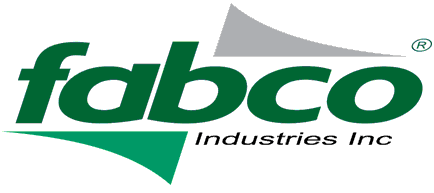Fabco Industries Motto: Treat Stormwater At The Source
At Fabco, Collaboration Leads to Innovation when you treat stormwater. When people work together, they can deliver incredible results. Recently, FABCO was fortunate to be part of such an effort.
This collaboration began in Philadelphia. As one of the oldest municipalities in the country, Philadelphia’s infrastructure has had to adapt and grow with technological development, population shifts and environmental concerns. The work requires constant vigilance. When the Philadelphia Water Department (PWD) evaluated the stormwater runoff entering into the city’s inlets, the team found the system needed upgrading to treat stormwater.
The current infrastructure included a large number of specialized filter bags called Catch Basin Inserts (CBI) to capture and treat storm water as it entered the sub-surface conveyance system – a treatment method called Decentralized Treatment. The existing CBI filter bag designs were not able to handle new demands placed on the system. These CBI’s were difficult to maintain, in some cases requiring the staff to reach into the bags and remove sediments and collected material by hand. Worse, the overburdened frames were weak, and the bags could easily rip, spilling their contents back into the drainage system.
The PWD immediately began looking for a better solution to treat stormwater.

The Philadelphia Water Department turned to one of Fabco’s leading stormwater innovation partners: ACF Environmental. The goal was to find a solution that could adapt and meet the performance goals within Philadelphia’s Green City, Clean Waters initiative. Project discussions were thorough and included representatives from the PWD, ACF Environmental, The Green Stormwater Operations Unit (GSO) and, for a “feet on the street” point of view, the PWD’s maintenance team.
One of the first developments from this collaborative effort was an innovative filter bag from ACF. It featured a unique two-stage, geotextile filter bag that combined the high treatment flow rates required in the streets of Philadelphia with extreme strength for long life and effective maintenance. With this game changing filter bag in hand, the focus of the team shifted to the physical drain inlets where the bags would be installed. New supporting frames, hardware and mounting systems would be needed to install and hold these unique filter bags in the complex system of storm drain inlets in order to maximize effectiveness.

With many years of first-hand experience, ACF contacted FABCO INDUSTRIES for help. As an industry leader in Catch Basin insert products and a proponent of decentralized treatment methods to treat stormwater, Fabco saw this as an opportunity and began to conceptualize its plans.
How could a frame be constructed to support the weight of the new bags while remaining light enough to lift by maintenance crews? How would the frame be anchored for both strength and easy maintenance? How would the design deal with drain size variations? These questions led the engineers and design team at FABCO to see a product that did not yet exist.
Guided by the work done by ACF Environmental and PWD’s long term experience as well as following the standards set by GSI and Fabco’s engineers, designers and fabricators delivered a family of three simple insert filters that met the design parameters of the project to treat stormwater.
In December 2018, ACF Environmental and PWD unveiled the new StormSack PWD stormwater filtration system and installed the first evaluation systems in Philadelphia. The achievement was the result of collaboration, innovation and viewing problems as opportunities. Fabco Industries is proud to have been a partner in the process.
EPA Reference information
One of the most exciting new trends in water quality management today is the movement by many cities, counties, states, and private-sector developers toward the increased use of Low Impact Development (LID) to help protect and restore water quality. LID comprises a set of approaches and practices that are designed to reduce runoff of water and pollutants from the site at which they are generated. By means of infiltration, evapotranspiration, and reuse of rainwater, LID techniques manage water and water pollutants at the source and thereby prevent or reduce the impact of development on rivers, streams, lakes, coastal waters, and ground water.

